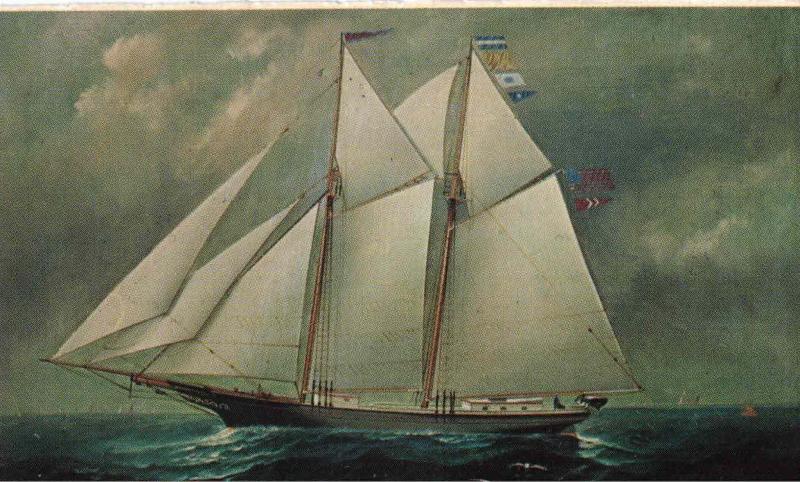An old friend, Jon Wood, reminded me of the following incident which appeared in Greene’s 1906 history of Boothbay and in Rice’s 1938 Shipping Days of Old Boothbay. The focus of the story is Leonard McClintock who was born in 1840, grew up on the east side across from the present Brown Brothers, spent his life at sea, and built a house on McClintock Street in 1883. The street was created and named in 1887. The Logans bought the house in 1943 and it soon became The Village Store. Greene’s version of the story follows. – Barbara Rumsey
Captain Len
“Captain Len McClintock, as he was familiarly called, was an expert and successful seaman, and noted for his daring qualities wherever he was known, and his acquaintance was large in many of the Atlantic ports. His adventures were many, but perhaps the most sensational, the one that drew comment from many of our leading newspapers, occurred at Ponce, Porto Rico, on November 27, 1876.
“Capt. McClintock had entered that port a few days before with a general cargo. His manifest contained an error in weight but not in number of pieces, so that it was immaterial, though technical. He was hurried before a magistrate by the Spanish authorities, ravenous for their plunder, for they received one-half of the fines imposed. The vessel was fined $4,000, but was left in the charge of the captain and his crew. A gunboat, with fires banked, lay at the mouth of the harbor on guard. Capt. McClintock begged time before confiscation to confer with the American owners, though he was, unknown to his persecutors, a principle owner.
“In the meantime, he sounded out a passage through a dangerous reef that bounded one side of the harbor, always deemed impassible. He did this, unobserved, from a dory. Much of the time he was lying there he spent onshore, playing billiards and otherwise sporting with the officials, appearing entirely indifferent to his condition. He became very popular with them. Every night his crew drew up the anchor one pawl [cog] of the capstan, heaving the anchor short without suspicion.
Evading the Spanish
“Finally a suitable breeze sprang up. The captain was ashore with the officials, calm as a rock, while they were excited over the betting at the game. He had earlier in the day obtained permission to spread his sails to dry them. Suddenly at 11:30 a.m., he left his companions ashore, went aboard, weighed anchor, spread every yard of canvas and sailed straight for the reef. The officials, both ashore and on the gunboat, were dumb with surprise, for they saw only a wreck ahead for him. But he went through where he had sounded without a scratch and it gave him four miles lead on the war vessel, which had to round the reef—besides the time it took to get the fires going.
“He passed directly under the guns of the fort, but on account of other shipping lying in range, not a shot was fired. Before nightfall he was out of their sight. They guarded the Mona passage for some time without result, for he sailed to the south of San Domingo, exactly opposite the calculations of his pursuers. In due time he reached New York, took out new papers, and changed the name of his schooner, the Baracoa, to that of Eunice McKown, named for the daughter of one of the owners, Capt. Silas McKown [actually Cyrus McKown, and the name wasn’t changed until 1881]. The two men in his crew upon whom he mostly relied in this dangerous exploit were Benjamin Kenney and John P. Perkins, both of Boothbay Harbor. His home was on the corner of Townsend Avenue and McClintock Street. He died January 27, 1890.”































